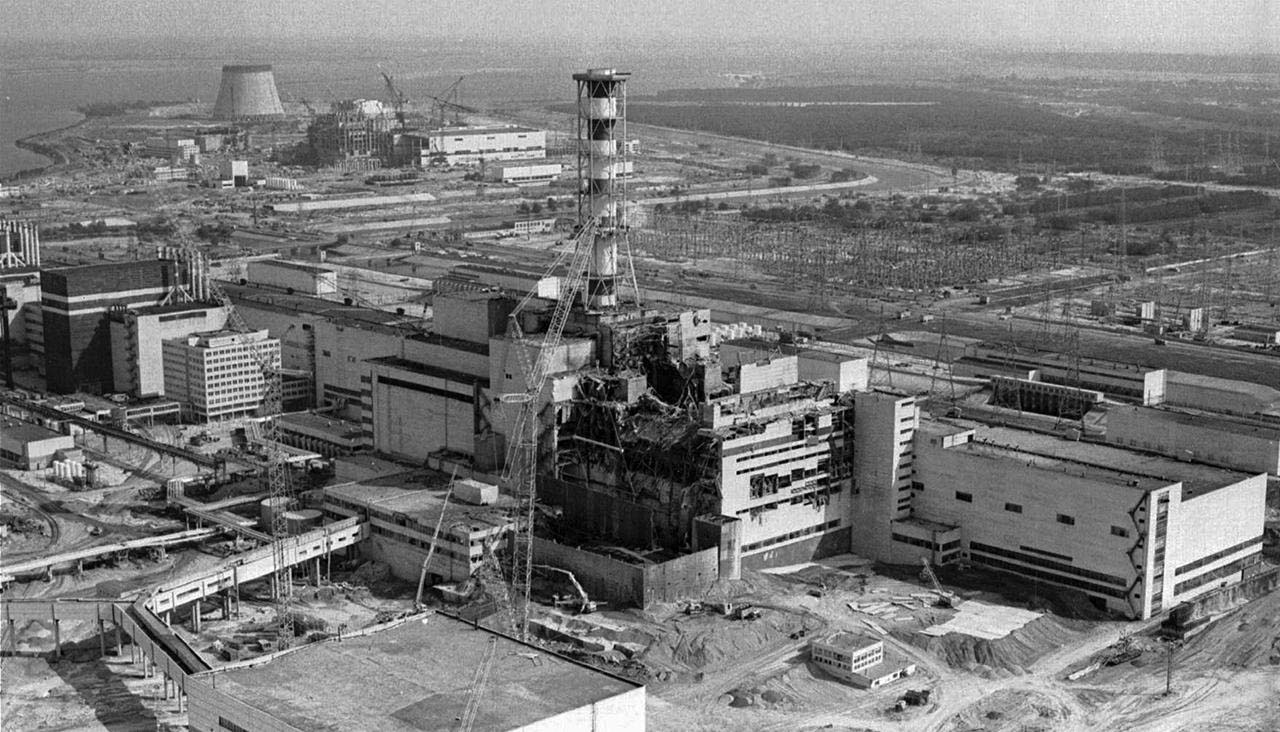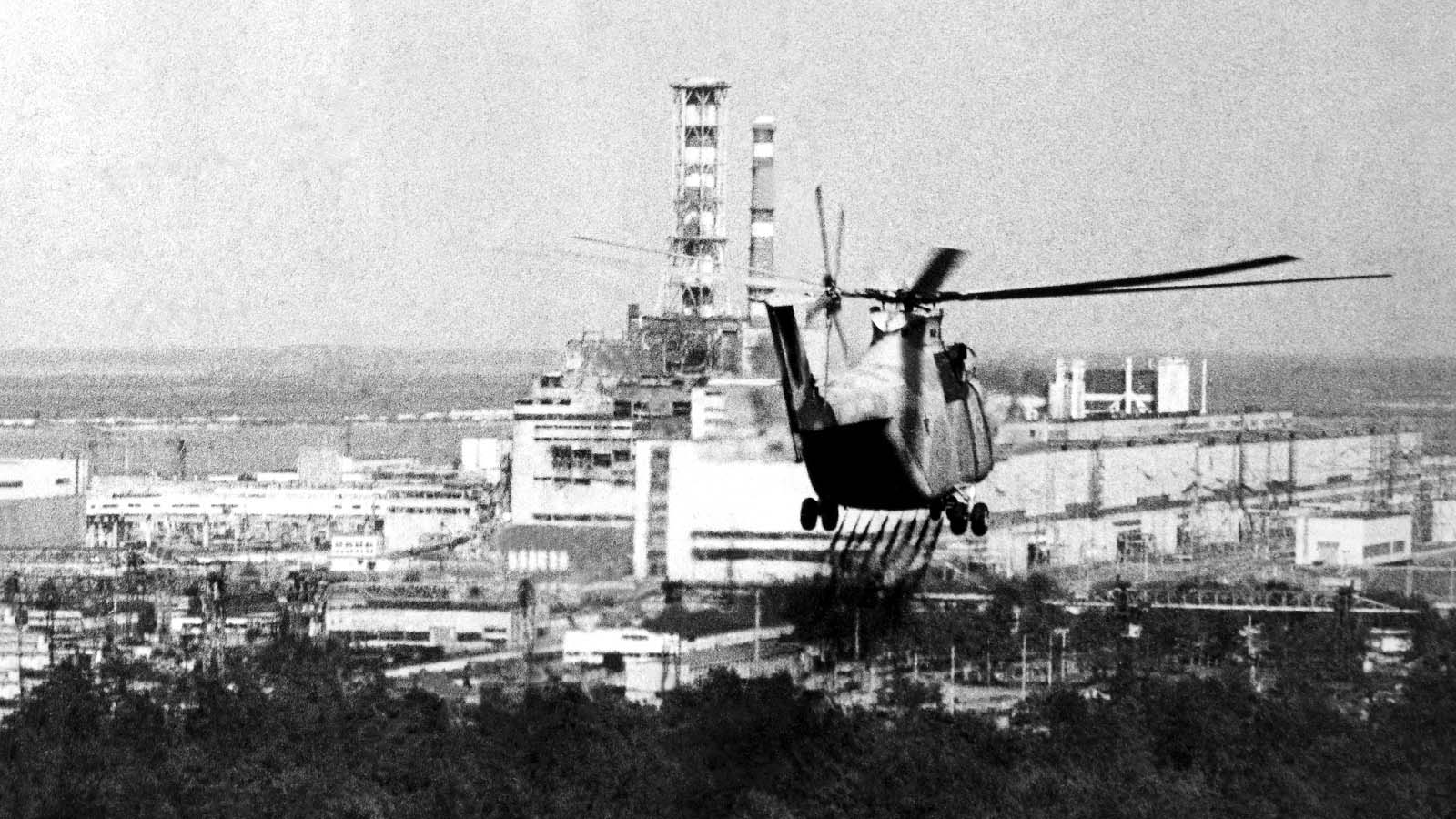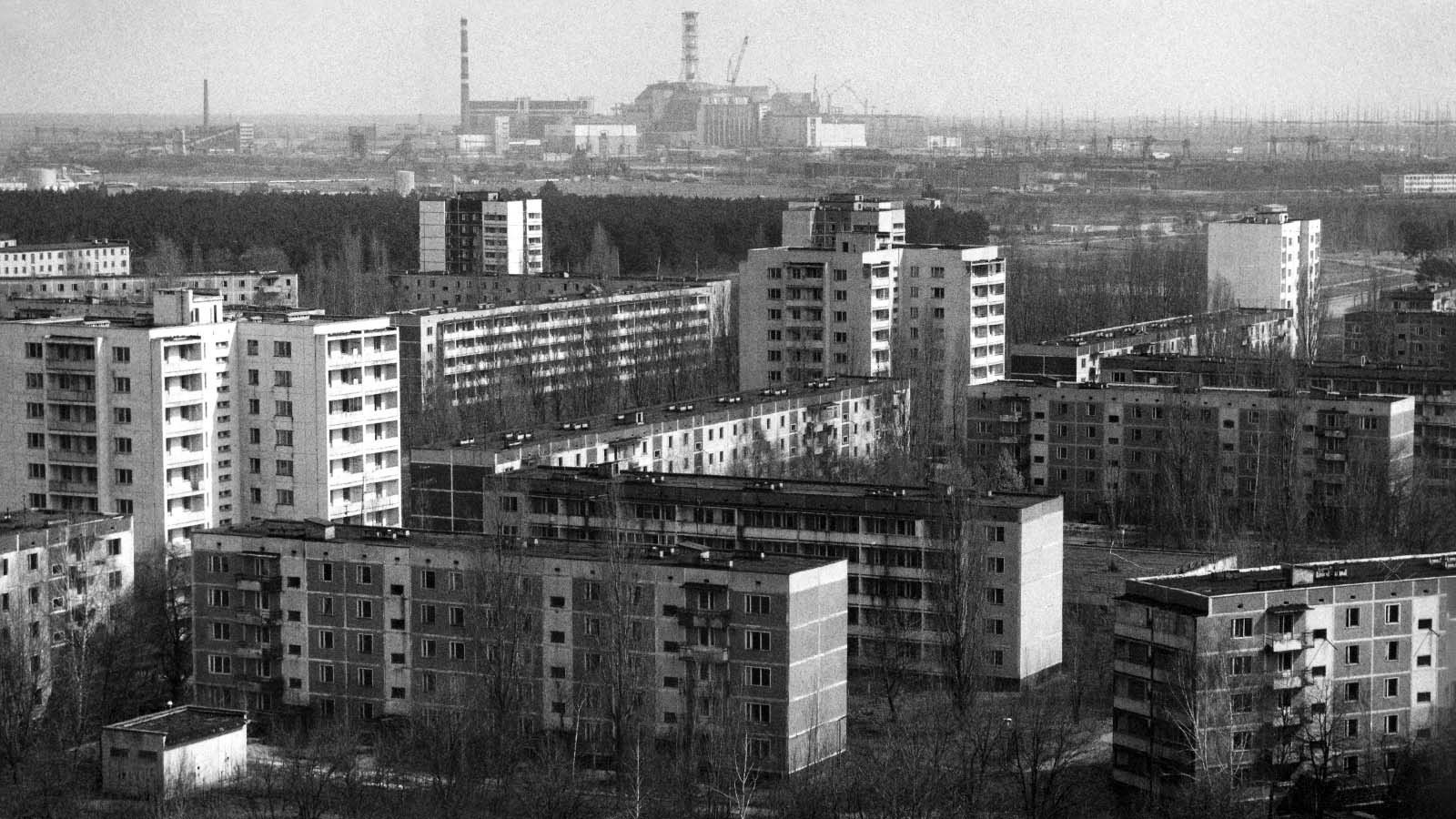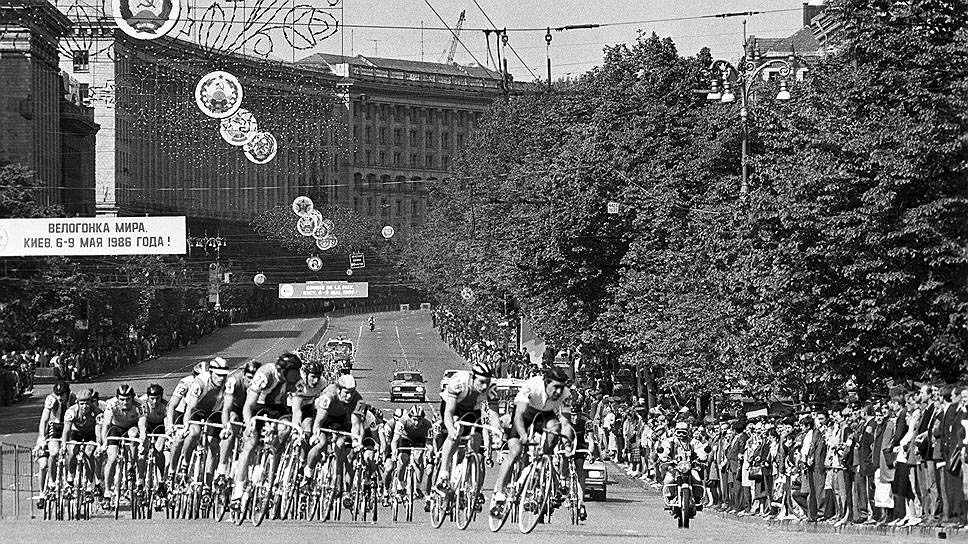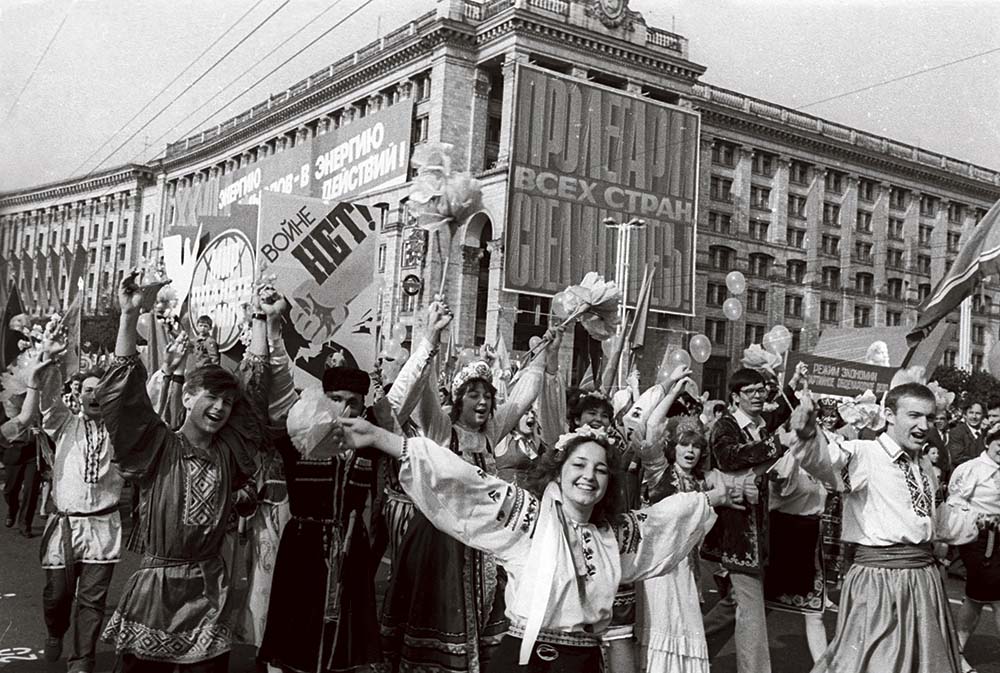2 beautiful cities. And 2 such different destinies… How did they influence each other?
On April 26, 1986, at 01:23:58, a series of explosions destroyed the reactor and the building of the 4th power unit of the Chernobyl nuclear power plant. According to observational data, on April 29, 1986, high background radiation was recorded in Poland, Austria, Germany, Romania, on April 30 – in northern Italy and Switzerland, on May 1-2 in France, the Netherlands, Belgium, Great Britain, northern Greece, on May 3 – in Israel, Turkey, Kuwait. Gaseous and volatile substances thrown at high altitudes spread globally: on May 2 they were registered in Japan, on May 4 – in China, on May 5 – in India, the USA and Canada. It took less than a week for Chernobyl to become a problem for the whole world and a terrible tragedy for Pripyat, Kyiv, as well as all the settlements that were assigned to the Exclusion Zone.
Pripyat – an abandoned city 94 kilometers from Kyiv
In 1967, after several years of searching for a site for the construction of a nuclear power plant, a state commission selected for this purpose an area unsuitable for agriculture in the north of the Kyiv region. The atomic city of Pripyat (in honor of the river flowing nearby) was declared an all-Union construction site and very soon a city appeared here, which consisted of 5 microdistricts (the 6th microdistrict was at the excavation stage at the time of the disaster). To understand the scale of this once beautiful and comfortable place, it is worth describing it in the language of numbers, so:
– 60 houses, 13,414 apartments, 18 hostels for bachelors with 7,621 places, 8 family hostels and hotel-type houses with 1,206 rooms,
– 15 preschool institutions, 5 schools and 1 vocational school,
– 3 clinics, 1 medical unit,
– stadium with 5000 seats (not in use, was built in 1986),
– indoor pool,
– 25 shops, 27 canteens, cafes and restaurants with 5535 seats,
– 3 cultural institutions (not including a disco): a palace of culture, a cinema with 1220 seats, an art school with 8 rooms for group work,
– 1 park, 35 children’s playgrounds and towns, 18,000 trees, 250,000 shrubs, 34,000 rose bushes.
Known for the fact that it often appears in photo reports, the Pripyat amusement park includes 2 attractions – “Autodrome” and “Overview Wheel”. The attractions were brought to Pripyat and installed in the spring of 1986. The grand opening of the amusement park, as well as the stadium, was supposed to take place on May 1, 1986… As well as Rusanovka, which, however, is just a microdistrict in Kiev, Pripyat was supplied much better than other cities – scarce goods were always available here.
Kyiv is a city 94 kilometers from Pripyat
At a time when the residents of Pripyat did not yet know that they would soon have to leave their beloved city, their lived-in apartments and the places that had become so dear to them, the residents of Kiev did not suspect anything at all, and only towards noon on April 30 an increase in background radiation was recorded. Kyiv was saved by nature itself – in the first days after the accident, a strong south and south-west wind blew, which carried radioactive particles away from the capital towards Belarus and Western Ukraine. But by May 3, the background radiation in the city had risen from the usual 20-40 microroentgens per hour to 2600. A few days later, a strong, but now northerly wind blew, which did not allow the radiation to settle in Kyiv and carried it a great distance from the city. The infection still occurred and affected the Kyiv-Dnieper waterway. Dangerous concentrations of radionuclides from the water tap were discovered even a year after the Chernobyl disaster and for this reason a backup water supply system was created “Rosa-300“, about 60 artesian wells were also drilled throughout the city.
During the evacuation of Pripyat residents, 1,390 buses and trucks were used, and 835 vehicles with drivers were sent there from Kyiv. Having completed their work, people returned home to their families and did not even suspect that their clothes, like themselves, were heavily “contaminated” with radiation… The first injured liquidators were brought to the Kiev Zhulyany airport, and from there they were sent for treatment to Moscow. All planes were “contaminated” and were ordered to be sent back to Kyiv. Once again, the people of Kiev sat at the controls of the planes… And Kiev lived an ordinary life, because the Soviet government liked to hide information about any of its mistakes and this situation was no exception – the first and very meager information appeared in the newspapers only on April 30, where it was reported that that the nuclear reactor is damaged and measures are being taken to eliminate the consequences of the accident. At the same time, the first liquidators were already beginning to die in Moscow and Pripyat.
The most cynical and inhuman act towards the residents of Kyiv on the part of the authorities was the celebration of Workers’ Day on May 1. Thousands of people came out to demonstrate, where they sang, danced and had fun… After this, many went to their summer cottages or into nature to have a good o relax on the weekend, which turned out to be long that year – 4 days. But on Monday, May 5, when Kiev residents went to work, rumors began to creep around the city that the accident at the nuclear power plant was much more serious and dangerous. Officials stubbornly maintained an aura of secrecy and on May 6 confirmed the holding of the 39th international cycling race of the world, while in the center of Kyiv the gamma background was several dozen times higher than the norm. But the townspeople no longer believed what was happening and the media no longer believed what was happening – after May 7, mass buying of tickets began at railway ticket offices (about 70,000 tickets were sold per day), and in just a few days, Kiev residents withdrew more than 30,000,000 rubles from savings banks, and long lines lined up at bus stations of those wishing to leave the city.
We must pay tribute to the Ukrainian officials of that time – contrary to instructions from Moscow (including Mikhail Gorbachev himself), on May 8, 1986, they issued a decree “On the organization of recreation and work for students and the health of children in Kiev”, according to which classes were to be stopped until 15 May, and all children, about 250,000 people, must be urgently sent to camps and health centers. Trains with children departed from Kyiv almost without interruption, and by May 25 the city was empty of children – only adults and old people remained here. The watering machines worked to their limits – they watered sidewalks, roads, green spaces, public places… everything just to avoid the accumulation of radioactive particles as much as possible. Kyiv practically turned into Pripyat – children’s voices and laughter were not heard, parks and beaches were empty, cinemas, department stores and concert halls were practically idle.
Autumn did not bring relief to Kyiv, because a new problem arose: what to do with fallen leaves that have accumulated a lot of radiation? Contrary to the proposals of scientists to bury this entire deadly mass, the city authorities decided to take the leaves to a household waste landfill in Obukhov. The winter of 1986-1987 was rightly called “nuclear”, since an abnormal amount of snow fell then. Since 1987, Kyiv officials had an additional issue that required a quick solution – the resettlement of Pripyat residents. Already in January, 7,500 apartments and 1,000 places in dormitories were allocated. The bulk of the residents of Pripyat received housing in Troyeshchina (several blocks along Honore de Balzac Street), which at that time was actively being built up. They were also allocated plots of land in the north of the region for gardening and horticulture. At the end of Troyeshchyna they also began to build a Republican Clinical Hospital (Burn Center) to help victims of radiation, but since the collapse of the USSR, all work was stopped and has not been resumed to this day. In the period from 2007 to 2013, several monuments were erected in Desnyanskiy Park in honor of participants in the liquidation of the consequences of the accident at the Chernobyl nuclear power plant, and Since April 26, 1992, the Chernobyl Museum has been operating in Podol.
The life of the city of Pripyat was cut short during the time of its heyday and prosperity, the life of the city of Kyiv continues, but the date “April 26” will remind residents of both cities and their descendants for a long time about that terrible accident in 1986.
History of Chernobyl in dates
1970 – the city of Pripyat was founded, construction of the Chernobyl nuclear power plant began
1977 – commissioning of the 1st power unit
1978 – commissioning of the 2nd power unit
1981 – commissioning of the 3rd power unit
1983 – commissioning of the 4th power unit
April 26, 1986 – accident at the 4th power unit
April 27, 1986 – evacuation of 50,000 residents of Pripyat
April 28, 1986 – the first looter was detained in Pripyat
December 15, 2000 – complete shutdown of electricity production at the Chernobyl NPP
